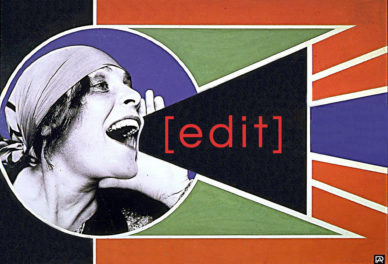Those accustomed to thinking of Sam Francis as a major figure in a local art scene will be surprised to find that he was quite the internationalist, even before it became compulsory for Los Angeles artists to be so. A resident of France and Japan for nearly a decade each, and fluent in the languages of both countries, he was, as Paul Schimmel puts it, “the ultimate insider-outsider,” a participant in many art scenes but defined by none.
Born in the San Francisco Bay Area, he lived also in New York, Switzerland, China, and Mexico, and traveled extensively throughout his life. His foreign sojourns were somewhat synonymous with his marriages to five women, all artists. With his second wife, Francis lived in Paris; his third and fourth wives were Japanese, and his fifth wife was from England. The newly catalogued Sam Francis Papers at the Getty Research Institute, which offer comprehensive documentation of Francis’s life and career, also contain ample evidence of these marriages, including love letters, snapshots, and Super 8 movies.
Among Francis’s artist wives, one attained a level of international acclaim: Mako Idemitsu. From a family with wealth and fame in Japan on a par with the Rockefellers in the U.S., Mako settled into Francis’s house on Channel Island Road in the early 1960s, and they had two sons. Photographs show a young woman, simply attired, who gazes directly into the camera. But when the lens catches her unaware, her face registers a notable range of emotions—consternation, melancholy, joy—her beauty the impervious backdrop to the drama enacted upon it.
One day in Los Angeles, while on an outing with her two sons, Idemitsu spontaneously purchased a movie camera. Her films in the Sam Francis papers, probably her first, are home movies of the children frolicking in the pool, lying on the living room rug, or being held in Francis’s arms.
This domesticity, its intense intimacies and responsibilities, would become the theme of the works that have made her a foremost female media artist in Japan. Three videos by Mako are in the GRI’s Long Beach Museum of Art Video Archive; their titles suggest the content: Great Mother (1983–1984), What a Woman Made (1973), and HIDEO: It’s Me, MAMA (1983).
Idemitsu became a part of the incipient feminist art movement in Los Angeles and made a film about its most famous manifestation, Woman’s House (1972). Her films and videos of the period evoke a patriarchy of surveillance that depletes, rather than actively torments, its female subjects. Another Day of a Housewife (1977), for example, portrays Idemitsu performing various household chores while a giant eye on a television monitor watches her.
Adjectives that might describe Idemitsu’s work, such as political, allegorical, or satirical, would never be applied to the work of Sam Francis; nonetheless, evidence is that Francis’s relationship with Idemitsu inspired some of his best art. The painting Untitled (Mako Series) from 1967, in Pacific Standard Time: Crosscurrents in L.A. Painting and Sculpture, 1950–1970, is part of his elegant Mako Series, which presents white interiors banded by spare strips of vivid color, positing an entirely different version of domesticity.
In 1974, the same year she made Sam, Are You Listening?, Idemitsu went to Japan with Sam and the children to live for a year, but she never returned to live in Los Angeles.
Francis and Idemitsu continued their lives and their art separately—Francis painting in Santa Monica until his death in 1994, and Idemitsu creating video art in Tokyo, where she continues to live and work today.

See all posts in this series »




Comments on this post are now closed.